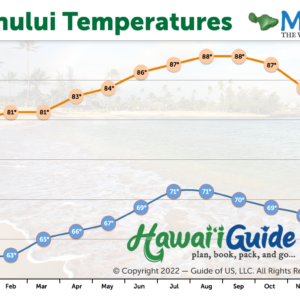Planning a trip to Hawaii and wondering what the weather is like year-round? Look no further! Discover the delightful climate that awaits you in this tropical paradise. From warm and sunny summers to mild and pleasant winters, Hawaii offers a dreamy weather experience regardless of the season. So pack your swimsuit and sunscreen, and get ready to soak up the sun in this enchanting island destination.
Average Temperature
In Hawaii, the average temperature remains fairly consistent throughout the year, thanks to its tropical climate. You can expect warm temperatures regardless of the season, making it an ideal destination for those seeking a reprieve from the harsh cold or scorching heat elsewhere. The average temperature in Hawaii ranges from the high 70s to the low 80s Fahrenheit, making it the perfect place to soak up the sun and enjoy outdoor activities.
Temperature Range
Hawaii experiences a relatively small temperature range throughout the year. Even during the coldest months, the temperature rarely drops below the mid-60s, while during the warmest months, it typically stays below the mid-90s. This pleasant temperature range allows for comfortable exploration and enjoyment of the beautiful Hawaiian islands, no matter the time of year.
Monthly Variations
While the average temperature remains fairly constant, there are some monthly variations worth noting. In the summer months of June, July, and August, temperatures tend to be slightly warmer, reaching the high 80s. Conversely, during the winter months of December, January, and February, temperatures are slightly cooler, averaging in the mid-70s. These monthly variations, although subtle, can influence the choice of activities and attire during your visit to Hawaii.
Rainfall
Hawaii’s tropical climate means that it experiences a significant amount of rainfall throughout the year. However, don’t let that discourage you from planning a trip to this paradise. The frequent rain showers are often short-lived and create lush, green landscapes that add to the beauty of the islands.
Annual Rainfall
The annual rainfall in Hawaii varies depending on the location and elevation. Coastal regions generally receive less rainfall compared to higher elevations. On average, the annual rainfall ranges from 20 to 30 inches in lowland areas, while mountainous regions can receive up to 200 inches of rainfall per year.
Dry Season
Hawaii’s dry season typically falls between April and October. During this time, the islands experience reduced rainfall, resulting in drier and sunnier weather. However, it’s essential to note that even during the dry season, occasional showers can occur, especially in more tropical regions. So, it’s always a good idea to carry a light rain jacket with you, regardless of the season.
Wet Season
The wet season in Hawaii typically occurs between November and March. During this time, the islands experience more frequent rainfall. However, it’s important to remember that the rain showers are often brief and followed by clear skies. The rainier weather during the wet season also brings cooler temperatures, creating a refreshing and comfortable atmosphere.
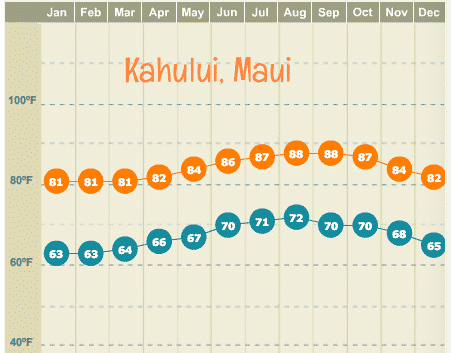
Explore Uncharted Hawaiian Destinations
Trade Winds
One of the most pleasant aspects of Hawaii’s climate is the constant breeze provided by the trade winds. These winds, blowing from the northeast, offer a natural form of air conditioning, making the tropical temperatures feel even more enjoyable. Not only do the trade winds keep you cool, but they also help distribute the rainfall across the islands, preventing any one area from experiencing excessive precipitation.
Constant Breeze
Hawaii’s trade winds are known for their consistency, providing a refreshing breeze that keeps the air moving and prevents the stifling humidity that can often accompany tropical climates. This constant breeze creates a comfortable environment for outdoor activities like hiking, surfing, or simply relaxing on the beach.
Influence on Climate
The trade winds play a vital role in shaping Hawaii’s climate. By ushering in cool air from the northeast, the trade winds help regulate temperatures, preventing them from becoming excessively hot. Additionally, these winds contribute to the rapid movement of weather systems, allowing any rainfall to be dispersed evenly across the islands. The influence of the trade winds on Hawaii’s climate enhances its desirability as a vacation destination throughout the year.
Microclimates
Although Hawaii is relatively small, it is home to several distinct microclimates. These microclimates result from varying factors such as elevation, topography, and ocean currents, creating diverse climate zones within the islands.
Various Climate Zones
Hawaii’s diverse geography gives rise to a range of climate zones. The coastal regions, with their lower elevation, tend to experience a tropical climate with more sunshine and less rainfall. As you move inland and up into the mountains, the temperature drops, and the rainfall increases, creating cooler and wetter environments. As a result, the Hawaiian Islands offer a variety of climates, from dry and sunny to cool and misty, allowing visitors to choose the type of environment that suits their preferences.
Factors Affecting Microclimates
Multiple factors contribute to the formation of microclimates in Hawaii. One of the main factors is elevation. As you ascend in altitude, temperatures drop, and conditions become cooler and wetter. The prevailing winds and ocean currents also play a role in shaping microclimates. Windward sides of the islands, which face the prevailing trade winds, tend to receive more rainfall, while the leeward sides experience drier conditions. These various factors converge to create the unique microclimates that make Hawaii such a captivating destination.
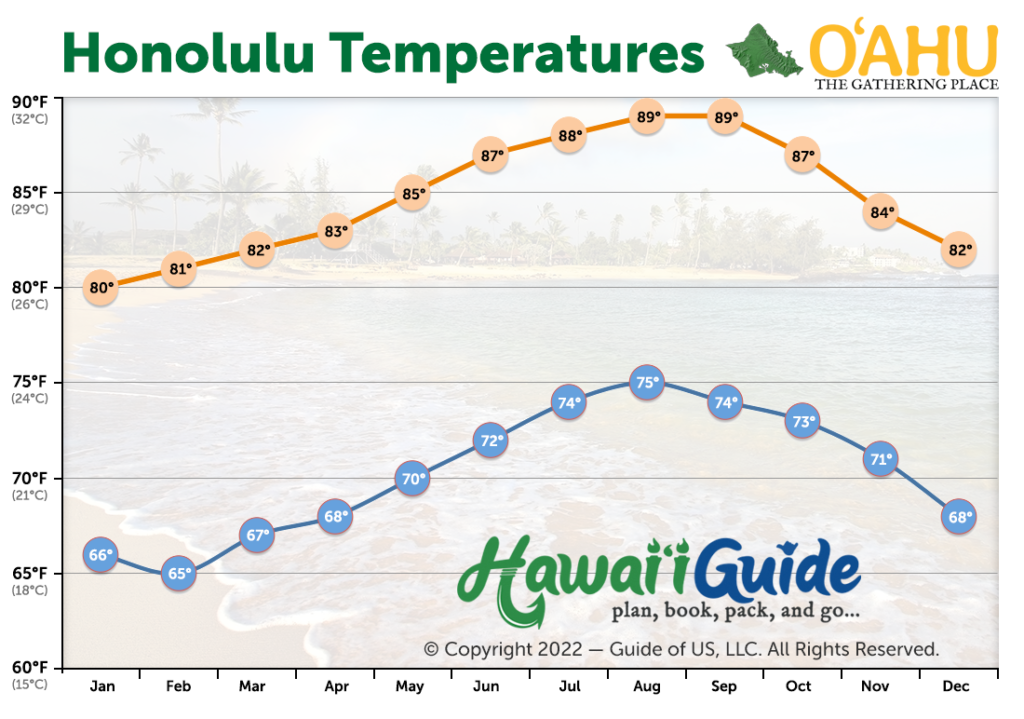
Plan Your Dream Hawaiian Getaway
Summer Season
Hawaii’s summer season encompasses the months of June, July, and August. During this time, the islands experience warm temperatures and a vibrant atmosphere perfect for outdoor adventures and beach activities.
Temperature
In the summer months, Hawaii’s temperatures reach their peak. Depending on the specific island and elevation, temperatures can range from the low 80s to the high 80s Fahrenheit. It’s important to stay hydrated and apply sunscreen when spending extended periods outdoors to avoid sunburn and dehydration in the warm summer sun.
Rainfall
While the summer season brings warm temperatures, it also sees a decrease in rainfall compared to the wetter months. However, occasional showers and tropical rainstorms can still occur, particularly in the mountainous regions. These summer showers are typically brief but can provide a refreshing break from the heat and add to the lush landscapes of the islands.
Winter Season
Hawaii’s winter season, spanning from December to February, offers a welcome respite for those seeking a milder climate. While the mainland United States experiences chilly temperatures, Hawaii’s winter temperatures remain comfortable and inviting.
Temperature
During the winter season, Hawaii experiences slightly cooler temperatures compared to the summer months. Average temperatures range from the high 60s to the low 70s Fahrenheit, providing a pleasant climate for outdoor activities. It’s important to note that even during the winter, the coastal regions of Hawaii typically remain significantly warmer than mainland destinations.
Rainfall
The winter season in Hawaii coincides with the wetter months. Although the rainfall increases during this period, it’s important to keep in mind that Hawaii’s rain showers are often short and localized, allowing for plenty of opportunities to enjoy outdoor activities. The occasional rainfall also contributes to the island’s vibrant greenery and lush landscapes.
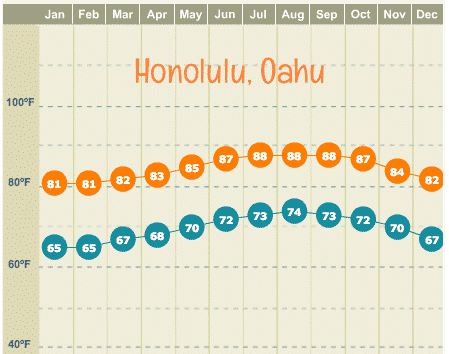
Experience Hawaii’s Unique Attractions
Spring Season
Springtime in Hawaii, encompassing the months of March, April, and May, brings with it a sense of renewal and beauty. The islands flourish with vibrant blossoms and refreshing weather, making it an ideal time for exploration and outdoor adventures.
Temperature
During the spring season, the temperatures in Hawaii begin to warm up gradually. You can expect average temperatures ranging from the mid-70s to the high 70s Fahrenheit. This comfortably mild weather allows for enjoyable outdoor activities such as hiking, snorkeling, or simply strolling along the picturesque beaches.
Rainfall
Springtime in Hawaii is characterized by a decrease in rainfall compared to the wetter winter months. However, occasional showers and passing rainstorms can still occur, especially in the mountainous regions. These bursts of rainfall contribute to the vibrant flora and fauna that make Hawaii a natural wonder.
Fall Season
The fall season in Hawaii, spanning from September to November, offers a delightful combination of warm temperatures and a decrease in tourist crowds. With pleasant weather and a range of activities to enjoy, the fall season presents an excellent opportunity to explore the islands.
Temperature
During the fall season, Hawaii experiences similar temperatures to the spring months. Average temperatures range from the mid-70s to the high 70s Fahrenheit, providing a comfortable climate for outdoor adventures and relaxation. The warm yet mild temperatures make it an ideal time to explore the beaches, go hiking, or simply unwind under the swaying palm trees.
Rainfall
Fall in Hawaii brings drier conditions compared to the summer months. While some rain showers may occur, particularly in higher elevations or windward sides of the islands, they are typically passing and give way to clear, sunny skies. The decrease in rainfall during the fall allows for more predictable and enjoyable outdoor experiences.
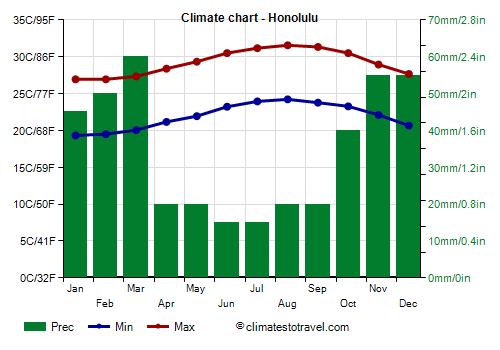
Hurricane Season
Hawaii’s location leaves it vulnerable to the Pacific hurricane season, which runs from June to November. However, it’s essential to note that the probability of hurricanes directly hitting the islands is relatively low. Hawaii’s topography and the presence of the trade winds often divert these tropical storms away from the archipelago.
Probability of Hurricanes
While the possibility of a hurricane affecting Hawaii is low, it’s always advisable to stay informed and prepared during the hurricane season. The islands have comprehensive emergency management plans in place to ensure the safety of residents and visitors. It’s important to stay updated with weather forecasts and follow any instructions or warnings issued by local authorities.
Best Time to Visit
Hawaii’s year-round pleasant climate makes it an appealing destination regardless of the season. However, each time of year offers its unique advantages and considerations, allowing visitors to choose the best time to suit their preferences and interests.
Peak Tourist Season
The peak tourist season in Hawaii aligns with the summer months, from June to August, and the winter holidays, particularly December. During these times, the islands see a higher influx of tourists, which can result in crowded beaches and attractions. It’s advisable to book accommodations and activities well in advance if traveling during the peak season.
Shoulder Season
The shoulder seasons, which occur during the spring (March to May) and fall (September to November), offer a balance between favorable weather and fewer crowds. With pleasant temperatures and a more relaxed atmosphere, the shoulder seasons allow for a peaceful and enjoyable experience.
Off-Peak Season
The off-peak season in Hawaii falls outside of the traditional tourist periods and offers a quieter and more affordable alternative. From September to November and January to March, you can find lower prices for accommodations and fewer crowds at popular attractions. While the weather remains delightful, it’s important to be aware of the possibility of increased rainfall during these months.
In conclusion, Hawaii’s year-round tropical climate provides a consistently warm and enjoyable experience for visitors. With its average temperatures, gentle trade winds, and diverse microclimates, the islands offer a multitude of activities and breathtaking scenery. Whether you choose to visit during the summer, winter, spring, or fall, Hawaii’s natural beauty and friendly atmosphere will undoubtedly leave you with cherished memories.
